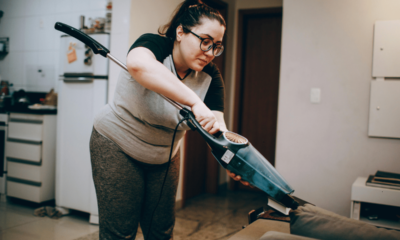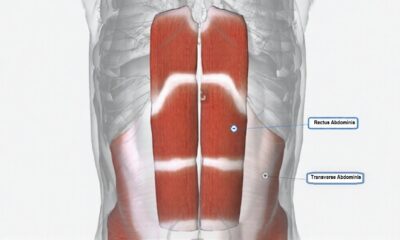Health & Fitness
How Aussies Can Boost Heart & Brain Health with Just 10‑15 Minute Walks and Vigorous Activity
Getting healthy doesn’t have to be hard or expensive. Two recent Aussie-led studies show that doing a bit of walking and getting your heart rate up a couple of times a week can go a long way for both your heart and your brain. Here’s what they found and how anyone — no matter your schedule or fitness level — can start making small changes that matter.
1. Why 10‑15 Minute Continuous Walks Matter
A study led by the University of Sydney (with collaborators in Spain) has shown that not just how many steps you take, but how you take them, makes a big difference. The research looked at 33,560 adults aged 40 to 79 who walked fewer than 8,000 steps a day and had no existing cardiovascular disease or cancer.
Participants wore wristbands to track their walking habits over a week. Then their health outcomes were followed over eight years.
Here’s what the study found:
- People who got their steps in with one or two longer walks of 10-15 minutes had a 4% chance of experiencing a cardiovascular event like a heart attack or stroke.
- Those who walked the same number of steps but in short bursts of under five minutes had a 13% chance.
- Among the most sedentary group (those walking 5,000 steps/day or less), the risk of heart disease dropped from 15% to 7% when switching from short to longer walking sessions.
- The death rate also dropped from 5% to less than 1% in that same group.
Co-lead author Dr Matthew Ahmadi from the University of Sydney said, “There is a perception that health professionals have recommended walking 10,000 steps a day as the goal, but this isn’t necessary. Simply adding one or two longer walks per day, each lasting at least 10–15 minutes at a comfortable but steady pace, may have significant benefits – especially for people who don’t walk much.”
Easy Tip: Try setting aside 15 minutes once a day to go for a proper walk. It could be before work, after dinner, or while taking a phone call. It’s a great way to unwind and also helps your body and mind.
Bonus Benefit: Walking can also improve your mood and lower stress. It’s a simple way to boost your mental health too.
2. How Moving More Can Help Your Brain
Another Aussie study, this time from the University of Tasmania, looked at how exercise affects your brain. It found that people who did vigorous activity — the kind that makes you breathe harder and sweat a bit — had lower levels of a protein linked to brain ageing and dementia.
This protein, called GFAP, is usually higher in people showing early signs of brain issues. The more active people were, the lower their levels were.
Even people with a higher genetic risk of dementia (something called the ApoE4 gene) saw some benefits from exercise — just not as much.
Again: This shows a connection, not a guarantee. But it’s a good reason to move more.
Easy Tip: Aim for a tougher workout once or twice a week. That could be a swim, a jog, a bike ride, or even a fast-paced home workout.
Added Motivation: Some research also shows that exercise can improve sleep, boost focus, and help with memory. So it’s not just about preventing problems — it’s about feeling better right now too.
3. Why This Matters For Everyday Aussies
Small Effort, Big Upside
Got a dog? You’re already halfway there. Daily walks with your pet — if done at a steady pace for 10–15 minutes — can deliver the same heart and brain benefits found in recent studies. You don’t need a gym or a personal trainer. You don’t need to work out for hours. Just:
- Walk 10-15 minutes a day without stopping.
- Get your heart rate up 1–2 times a week.
That’s it. And it can make a real difference.
Works for Different People
- Older Aussies: It’s a safe way to stay mobile and sharp.
- Busy workers: A walk during lunch or after work is doable.
- Anyone new to exercise: Start small, no pressure.
What Happens If You Do Nothing?
We all know it’s easy to skip activity. But doing nothing comes with real risks. Sedentary lifestyles are linked to:
- Higher risk of heart disease and stroke
- Increased chance of weight gain and diabetes
- Poor sleep, low mood, and even depression
- Faster decline in brain function with age
Just moving a little more can change all of that. And that’s powerful.
4. Easy Week Plan
Here’s a basic weekly idea you could try:
| Day | What To Do |
|---|---|
| Monday | 15-minute walk after work |
| Tuesday | Gentle stretch or short stroll |
| Wednesday | 20-minute bike ride or workout video |
| Thursday | 15-minute continuous walk |
| Friday | Rest or light movement |
| Saturday | Swim or jog for 20+ minutes |
| Sunday | Walk and stretch |
Disclaimer: This weekly plan is a general suggestion for informational purposes only. Always consult a healthcare professional before starting a new exercise routine, especially if you have any existing health conditions or concerns. For extra support, consider working with a personal trainer who can tailor a plan to your needs.
Tip: Mix it up! Try different routes, invite a friend, or listen to music or a podcast. Making it enjoyable is the best way to stay consistent.
Final Thoughts
Getting healthier might be as simple as moving just a bit more each day. The science shows that taking a brisk walk and doing a tougher workout once or twice a week can help your heart and may even protect your brain.
You don’t need to be perfect. You don’t have to overhaul your life. But adding a walk here or there — or working up a sweat a couple of times a week — can really pay off.
So why not start today? Go for a walk. Try something active. Build a small habit that could lead to big changes. Your future self will thank you.
























You must be logged in to post a comment Login